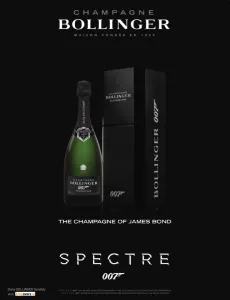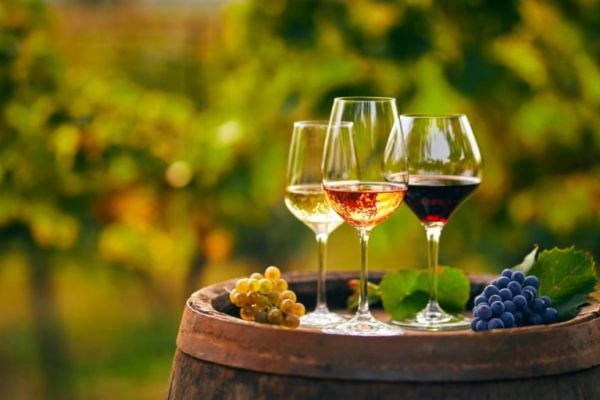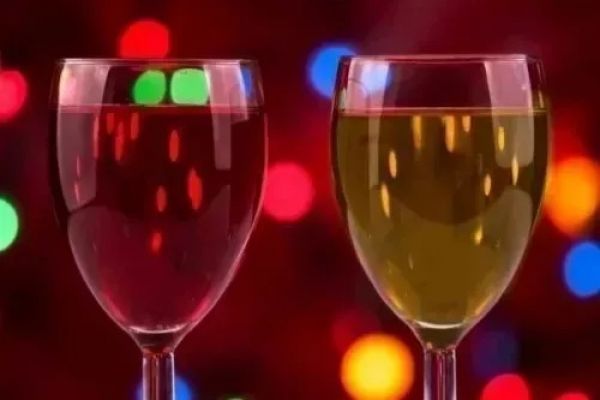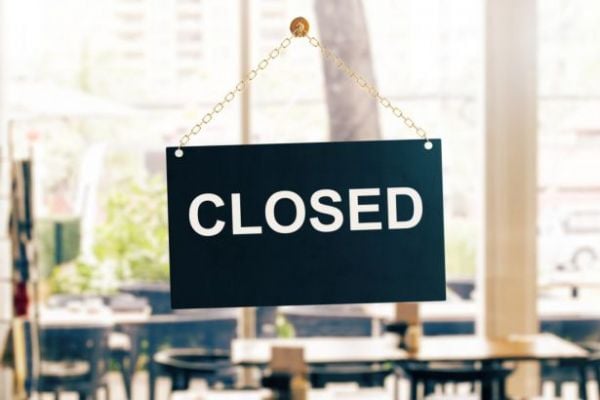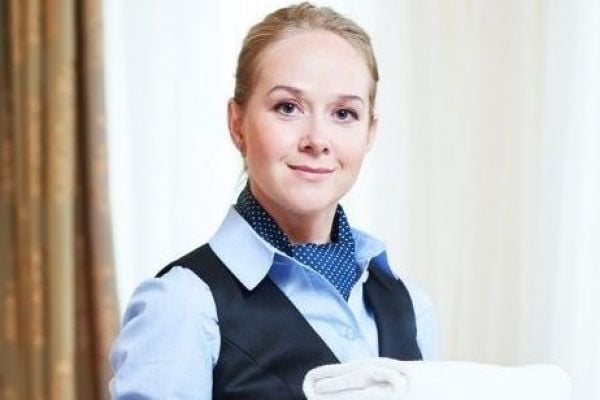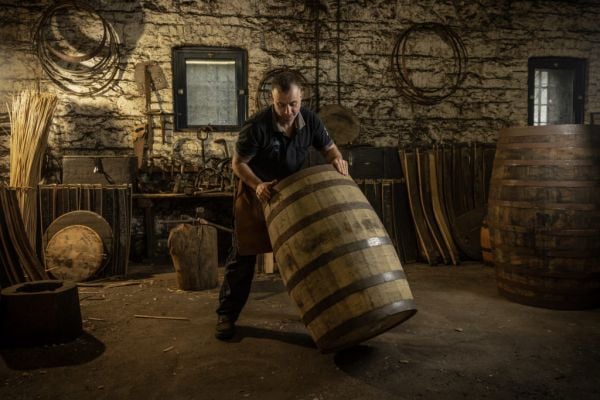‘Every time you open a bottle of champagne, it's a celebration. Every time you sip it, you're sipping from all those other celebrations. The joy accumulates over time,’ waxed author David Levithan in his Lover's Dictionary. Kevin Ecock reports on what makes this bubbly so beautiful and renowned the world over.
************************************************************************************************************************************
Champagne is one of France’s great artistic achievements. Its fame ranks alongside the Mona Lisa. It has survived world wars, continues to command robust price points, and, of all the great wines made in the world, it is the one dressed to impress.
Champagne is associated with success, achievement and reward, and commands price points that few other wine regions will ever attain. How has a small region of France at the very edge of where grapes can ripen managed to secure such eminence?
Three traits allow champagne to stand out from the crowd: history, quality and marketing. The first of these most probably has no influence on whether young affluent people want to buy into champagne as a wine of choice. It is, however, intrinsic as to why champagne exists at all.
While grapes grow well in Champagne – it has suitable geology and favourable geography – they find it difficult to ripen, as the region lacks sufficient sunshine and warmth. Its proximity to Paris, however, gave it both a local market and, crucially, from very early times, an export market, each of which were fond of the champenoise’s ability to develop sparkling wines from otherwise relatively poor base wines. It helped a lot that the kings of France had been crowned in the local capital, Reims. ‘Champagne’ therefore implied something aspirational and differ- ent, long before the bursar at the Abbey of Hautvillers, Dom Pérignon, began to make his blends well known, or indeed long before cork stoppers were wired down to protect the sparkle.
Courts across Europe partied with the sparkling wine of Champagne all the way through to the Roaring Twenties, at which time popular culture across the world embraced champagne as a wine of distinction and celebration. French wine laws had not even been penned, allowing champagne regional protection, and champagne was already an international brand.
Quality in any wine region can be ephemeral, as it may be objectively based. Thus, fashion and society can decide on wine quality as truly as experts and indus- try analysts. Champagne has always eschewed quality as a defining character of its wine. It has managed to protect this status over a long period of time.
Currently, Moët & Chandon, Veuve Clicquot, Nicolas Feuillatte, Mumm and Laurent-Perrier are the top-five-selling champagne houses (grandes marques). If history on its own is enough to explain the success of champagne, then Nicolas Feuillatte, sitting as it does among four very old houses, is a distinct problem. It was founded as recently as 1983, and is current- ly the biggest-selling champagne in France.
Quality in champagne is a function of the grapes used to make the wine, and also how the wine is produced in its cellars and how history has bequeathed the vineyards where the grapes are grown. It is an incredi- ble story that ties a unique heritage to the quality produced in Champagne.
The region is much larger than the area demarcated to grow grapes and ultimately allowed to use the name Champagne for its wine. Grapes need a good deal of daylight hours, sunshine and warmth to ripen. They also need a suitable soil to anchor into and from which to take nourishment.
It is these factors that have determined the vineyard boundaries of Appellation Champagne Controlée, the heart of which is dominated by the Vallée de la Marne (chalk slopes facing in all directions, famed for subtle and well-perfumed Pinot Noir), Montagne de Reims (half of which is plant- ed with the Pinot Meunier and said to give body and structure to the finished wine) and the Côte des Blancs (dominated by Chardonnay).
Two satellite areas of note are the Aube, south of Troyes, and Côte de Sézanne, to its north. Principal towns in the region include Reims, Épernay, and the regional capital, Troyes. Across this area the three principal grapes – Pinot Meunier, Pinot Noir and Chardonnay – have been planted to develop their fruit, body and structural potential.
As a means of assessing quality across all of the vineyards, the champenoise have fur- ther classified the region into 260,000 recognised parcels of land. Each of these has been meticulously mapped and analysed, and assigned to particular vil- lages, each of which in turn has been classi- fied as grand cru or premier cru. These map potential quality and determine the price in all grape-trading contracts. This is impor- tant, as the majority of the 30,000 families that make a living from champagne do not make the wine at all – they grow the grapes.
While statistics never made a wine, the numbers behind the champagne industry are quite extraordinary. The area under vine constitutes a meagre 0.4% of the world’s vineyard, and yet it contributes 14% of the volume and 40% of the value of all sparkling wines. There are 15,700 winemakers in the region, 140 cooperatives and 300 registered winemaking ‘houses’. Some 307 million bottles are produced annually, 43% of which are exported. At any one time there a billion bottles ageing gracefully in gigantic underground storage and ageing cellars. Probably the most inter- esting number in the champagne industry’s locker is that this year, its export market – worth €2.4 billion (led by the UK and the US) – showed double-digit growth in every one of its top 20 overseas markets.
Champagne is made by a very simple process. A base still wine is made, and this is refermented in a bottle in such a way that bubbles are captured and will only release when the cork is pulled. After the grapes have been harvested, they can either be sold on to a producer or made into wine.
There are a lot of small family winemakers in the Champagne region, many of whom make their own champagne. It is still possible to ferret out a rising star or to find a hidden jewel. Indeed, this is a natural hunting ground for small distributors look- ing for quality from small producers. Most of the grapes, however, are sold on to the houses and co-ops, both of which have an endless appetite for grapes. Each parcel of grapes and the resulting wine is kept separate from the produce of neighbouring villages. This protects nuances that are required in the blending process.
The real skill in producing good champagne is the ability to blend the various parcels of wine available after the primary fermentation. This blend is placed into a bottle along with a sugar source and a few yeasts. The bottle is sealed, and the wine inside is allowed to referment into a sparkling wine. This, of course, is also where the winemaker decides on style. The most common style on sale is the house cuvée, where all three of the grapes have been blended in varying proportions from various villages, often with some old wine held back from previous years, some of which may have been aged in oak barrels. There may be as many as 60 different ele- ments to the blend, and yet, the winemaker must ensure that, after spending a few years sitting on its yeast in a bottle, the style of the house cuvée will remain consistent from year to year. This is where champagne pro- duction verges on alchemy.
Take Taittinger as a good example (where a family member has run the busi- ness since 1734), well known for its widely available Brut Réserve, a classic blend of Chardonnay, Pinot Noir and Pinot Meunier from over 35 vineyards and various vin- tages, with a minimum ageing of three years before release.
Compare this to its flagship champagne, Comtes de Champagne Blanc de Blancs, in which – as its name implies – only Chardonnay of a particularly good vintage is used. In this case, a small proportion of the wine is aged in new oak barrels and then aged for almost ten years before being sold on to the trade. In both wines, the cellar master (chef de cave) must rely on a great deal of history so that the future can be predicted in the finished wine.
Every house, therefore, has its own unique style. While the houses may only account for growing less than 15% of the grapes in champagne, they are responsible for 70% of all sales and 90% of all exports. As such, a great deal of what we know of champagne – and indeed one of the key pillars to its success – is an impeccable understanding of how to market a luxury product. Most consumers would balk at the idea that they might need to learn the detail of the champagne industry, but none mind being introduced to a dizzy- ing world of popping corks, tall flute glass- ware and celebration.
It all began a long time ago. Louis Roederer first served its prestige label, Cristal, as far back as 1867, at a lavish meal in Paris, attended by a king and two tsars. Moët & Chandon released its Dom Pérignon prestige vintage cuvée for the first time in 1936, on a luxury liner sailing to New York.
Both brands have had an extraordinary longevity and have travelled well, as proven by Jay Z’s championing of Cristal and the Emirates airline’s current proud association with Dom Pérignon.
Almost every house has a prestige label – Perrier-Jouët and Belle Époque, Piper Heidsieck and Rare, Gosset and Celebris Rosé, Veuve Clicquot and La Grande Dame – regardless of whether the price seems excessive, whether the product is necessary at all, or, indeed, that there are no addition- al regulations governing their production. They are simply the products of very good marketing, the benefits of which cascade down through all of the other labels in the house.
As with all great wine regions, small quality labels such as Devaux, Joseph Perrier, Pannier and Gobillard might not come to mind as quickly as illustrious brands such as Bollinger, Charles Heidsieck, Pommard, Canard-Duchêne, Riunart or Lanson. These familiar brands need to spend a lot of time, resources and ingenuity so that they maintain their status.
Michael Foley, marketing director at Findlater Wine and Spirit Group (the agent for Bollinger in Ireland), told Hospitality Ireland, “Bollinger continues to invest sig- nificantly in the Irish market, particularly as economic conditions improve, and the brand is performing very well as a result. Sponsorship of Spectre and Punchestown are just two of our brand-activation activities, along with a range of other support programmes.”
Bollinger is family owned and rigorously independent, as it seeks perfection and style. Its fans may not know that behind every bottle is a reserve of 700,000 mag- nums and 3,500 small aged casks, each one of which allows Bollinger to create its unique taste profile. Its staff spend endless hours tending its 165 hectares of vineyard, and before release every bottle is aged at least twice as long as legally necessary. Thus, Bollinger is more than simply a unique heritage and place. It is also a phi- losophy. This is the level of commitment found across the whole of the Champagne region and a principle reason why cham- pagne continues to be one of the great wines of the world.
Today’s digital age is rapidly changing our access to champagne, as information strips away secrecy and intrigue, but this opens it up as never before. Now everyone can read the thoughts of the chef de cave behind every label, thus exposing the world to the extraordinary business of how Champagne continues to be a region, a wine, and an art form of the very highest quality.

